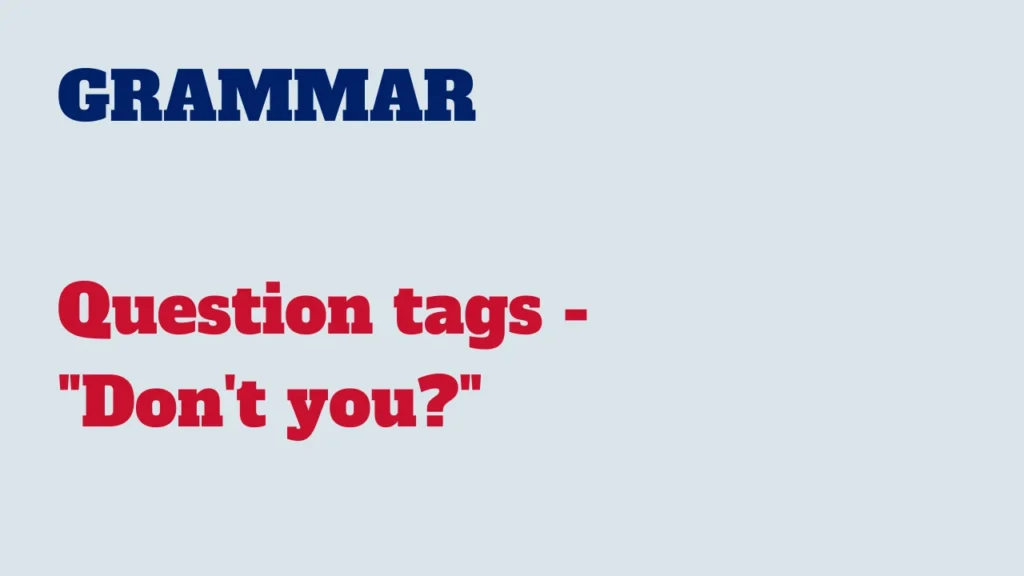Question tags are short questions added to the end of a statement to confirm information, seek agreement, or prompt a response.

In this lesson, we’ll explore the formation, usage, and common scenarios of “don’t you?” as a question tag.
Formation
Positive statement + question tag.
Examples:
He’s coming to the party, isn’t he?
We should leave now, shouldn’t we?
Usage of question tags:
Seeking confirmation or agreement:
Question tags are often used to seek confirmation or agreement with a positive statement.
Example:
You enjoyed the movie, didn’t you?
Expecting a positive response:
Question tags are also used when the speaker expects a positive response to the question.
Example:
You like chocolate, don’t you?
Common scenarios
Verbs in positive statements:
When the main verb in a positive statement, the question tag is in the negative form.
Example:
She sings beautifully, doesn’t she?
When the main verb in a negative statement, the question tag is in the positive form.
Example:
She doesn’t sing beautifully, does she?
Auxiliary verbs in positive statements:
If the positive statement contains an auxiliary verb, the question tag often uses the negative form of that auxiliary.
Example:
You have finished your homework, haven’t you?
Placement in sentences
After positive or negative statements:
The question tag is placed at the end of a positive or a negative statement.
Example:
We can go there, can’t we?
Question tags are a useful tool for seeking confirmation or agreement in English. By incorporating them appropriately into positive statements, you can engage in effective communication and encourage responses. Practice using question tags in various contexts to strengthen your language skills. Happy learning!



